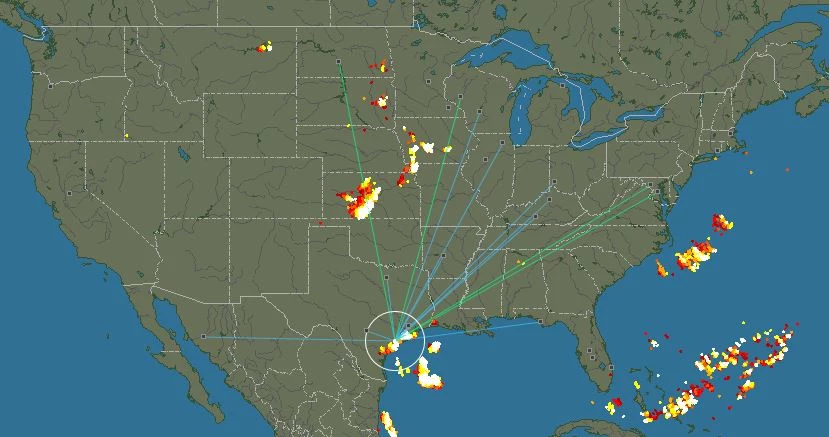

Once the level of risk has been determined, the development of appropriate lightning protection measures and implementation of lightning protection standards can be implemented onto your building or facility. Then, if struck, we look at how vulnerable the operations of the facility would be to that event. When assessing your risk from lightning, we first attempt to determine what is the likelihood that your building will be struck. The risk to your facility can be determined with the NFPA’s Lightning Risk Assessment located in Annex L of the current edition of NFPA 780. The NFPA keeps building owners informed of the lightning protection system standards with the provided NFPA 780, so they can rest assured that their facility meets current lightning protection system standard.
#LIGHTNING STRIKES BY ZIP CODE CODE#
One exception to this is the state of Florida, whose building code requires Lightning Protection Systems to be installed on all newly constructed Schools, Hospitals, and Nursing Homes. Lightning Protection standards generally leave the application of these systems up to the local Authority Having Jurisdiction (AHJ) or in most cases, the owner of the building.

In doing so, it provides facility owners the basis of design and installation requirements to safeguard people and property from fire risk and other related hazards associated with lightning exposure. NFPA 780 provides lightning protection standards, regulations and installation requirements. It’s important to recognize that with the exception of the state of Florida, all Lightning Protection Standards are just standards, they are not codes. The standards for lightning protection are regularly updated by the National Fire Protection Association (NFPA), with the current Lightning Protection Standard being NFPA 780. The Basics of Lighting Code Standards: NFPA This is why there are national and international lightning protection standards and regulations in place to help keep your personnel safe and operations running smoothly. The sheer power and voltage behind a lightning strike can cause extreme fires, electrocution, and extensive damage, completely disrupting a facility’s operations. One of the most significant dangers to buildings and construction sites is lightning.


 0 kommentar(er)
0 kommentar(er)
